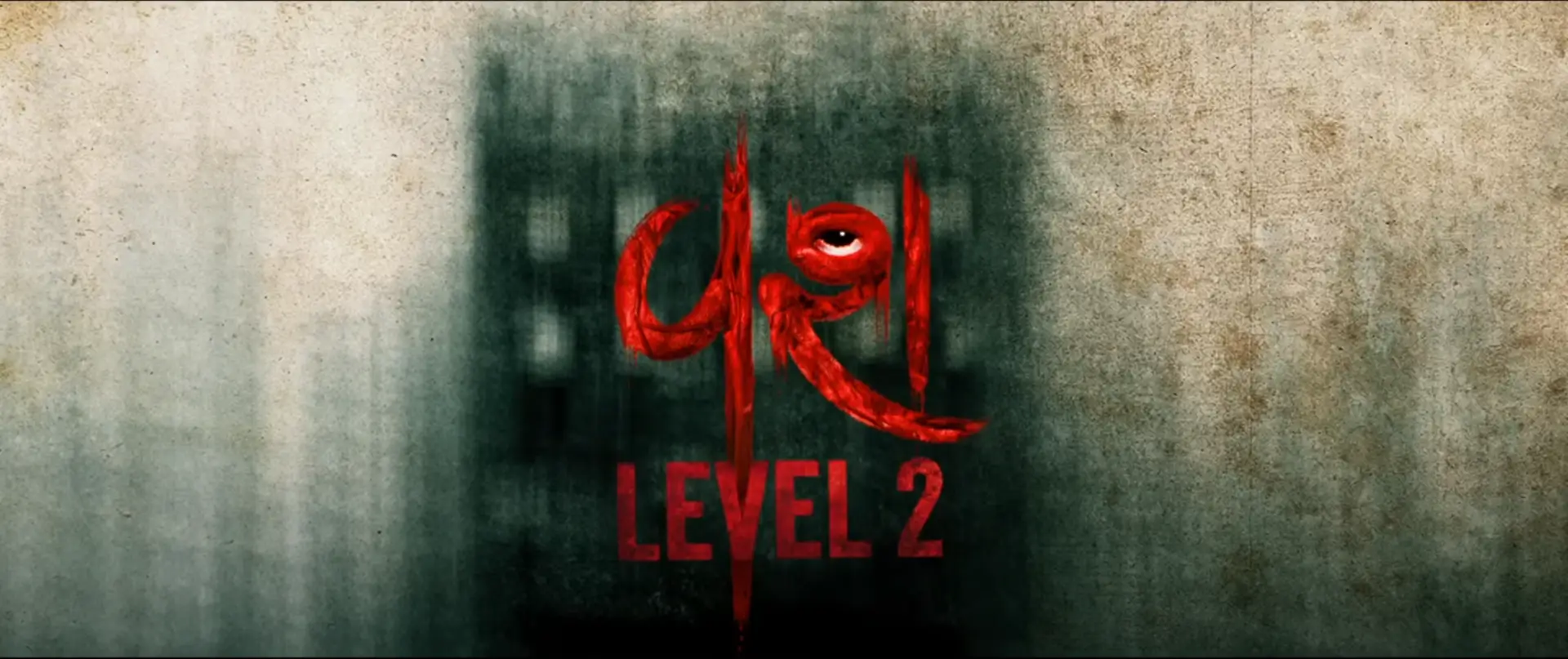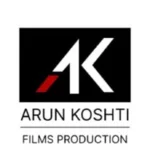Gujarati Cinema in Its Golden Era
The Gujarati film industry is entering a new golden period. In the past few years, Gujarati cinema has grown at a rapid pace, expanding its audience base far beyond Gujarat. With better storytelling, high-quality production, and innovative entertainment, Gujarati films are no longer seen as just regional cinema. Instead, they are emerging as profitable ventures with national-level recognition.
Recently released “Vash – Level 2” is the perfect example of this transformation. The film created a storm at the box office, collecting ₹7.07 crore net and ₹8.18 crore gross in just 5 days, proving that Gujarati films now stand shoulder-to-shoulder with mainstream Indian cinema.

Movie: Vash Level 2
Intro: Twelve years after saving his daughter Arya from a dark force, Atharva learns it never left her. When strange events begin again, he must fight to save her once more.
Directors: Krishnadev YagnikYash Vaishnav
Writer: Krishnadev Yagnik
Stars: Janki BodiwalaMonal GajjarChetan Daiya
Box Office Report: 5 Days of Vash Level 2
📊 Breakdown of 5-Day Collection:
Gujarati Version:
- Wednesday – ₹0.85 crore
- Thursday – ₹0.50 crore
- Friday – ₹0.50 crore
- Saturday – ₹0.90 crore
- Sunday – ₹1.21 crore
👉 Total = ₹3.96 crore
Hindi Version:
- Wednesday – ₹0.45 crore
- Thursday – ₹0.40 crore
- Friday – ₹0.40 crore
- Saturday – ₹0.80 crore
- Sunday – ₹1.06 crore
👉 Total = ₹3.11 crore
➡️ Grand Total – ₹7.07 crore Net & ₹8.18 crore Gross Collection*

Reasons Behind the Success of Vash – Level 2
- A Fresh Take on Storytelling
The first part, “Vash,” had already gained massive popularity. In Level 2, the suspense and psychological thrills have been amplified, offering audiences a gripping cinematic experience. - Powerful Performances
The cast delivered strong performances, especially the antagonist, who won appreciation for his intense role. - Dual-Language Release
By releasing in both Gujarati and Hindi, the film reached a much wider audience base across India. - Effective Promotion & Marketing
The team used social media campaigns and local promotions effectively, building buzz even before release.

Acting & Direction
Performances that pull you into the story.
The ensemble delivers measured, believable acting that keeps the stakes high throughout. The leads—Janaki Bodiwala, Hiten Kumar, and Hitu Kanodia—re-inhabit their worlds with restraint rather than melodrama, which works perfectly for a psychological thriller. Janaki’s key confrontation moments linger long after the scene ends, and several school-girl characters unexpectedly steal the spotlight with raw, urgent performances that make the threat feel larger than any single household.
Direction that never lets the tension slip.
The film keeps a lean sub-two-hour runtime and moves with purpose. The first half sets up questions with crisp plotting; the second half answers them while tightening the noose toward a morally thorny climax. The director’s choices—minimal exposition, smart blocking, and purposeful silences—maintain a vice-grip on tone. The interval lands without you noticing the time, and the finale is deliberately provocative; some viewers will love it, others may debate it, but almost everyone will keep talking about it. The closing beat hints at a potential Part 3 without feeling like a gimmick.
Screenplay & dialogues built for momentum.
Scenes open late and exit early. Dialogues avoid grandstanding; they’re written to forward plot and reveal character under pressure. Even when the film scales up to city-wide stakes, the writing keeps us anchored to individual choices, which preserves emotional clarity inside the bigger canvas.
Background Score & (No) Songs
A score that functions as a second villain.
The background music is the film’s invisible engine—it creates dread, releases tension for a breath, then tightens again. Sound motifs associated with manipulation and control recur at pivotal moments, cueing unease without telegraphing twists. The low-frequency swells and brittle percussive textures convert several scenes into visceral experiences; you can feel the threat in your chest even before you consciously register it.
Sound design that makes spaces feel alive.
Foley and ambient beds are used with surgical precision: corridor hum, classroom chatter sliding into an eerie hush, distant city noise cutting out at the exact beat where the psyche shift happens. That quiet-loud-quiet dynamic is a big reason the suspense lands so hard.
No lip-sync songs—by design.
There are no traditional songs in the movie. The choice keeps pace tight and tone consistent. Instead of musical interludes, the film doubles down on score-driven storytelling, which suits the genre and maintains immersion.

Cinematography & Production Value
Images that say what dialogue doesn’t.
The cinematography is “Level 2” in every way. Framing favors negative space and layered foregrounds, letting danger creep in visually before it’s stated. Controlled handheld work in panic beats contrasts with composed, locked shots during “controlled” sequences—mirroring the tug-of-war between free will and domination. Low-light photography is clean, with skin tones protected and blacks held just above crush to keep detail.
Color, lighting, and texture that serve the theme.
A cool-leaning palette underscores the psychological chill, while practical warm sources (classroom lamps, sodium streetlights) pop during critical beats, guiding the eye without feeling stylized for its own sake. Diffused highlights and slightly desaturated mids give the world a hyper-real, uneasy sheen—pretty enough to watch, unsettling enough to feel.
Editing that respects the audience.
Cuts are invisible until they’re not—then they puncture. Reaction shots arrive a half-beat later than you expect, increasing anxiety. Set-pieces breathe, but no scene overstays its welcome; that editorial discipline is a major reason the film feels “shorter than its runtime” and why the interval sneaks up on you.
Production design that scales the threat.
Locations are chosen for story logic first—classrooms, corridors, civic spaces—and then amplified with sly details (notice boards, props, textures) that whisper subtext. When the narrative expands beyond one family to a wider civic threat, you can see the scale on screen: crowd control, unit movement, and background action are handled with a calm, professional hand.
Sound mix & finishing.
The final mix leaves room for silence to be scary. Dialogues remain intelligible under score, and impact hits never clip. The grade holds consistency across mixed lighting—no jarring shifts—which helps the film’s premium look. The upshot: a high-end feel on a disciplined budget.
Audience Response
The film received an overwhelming response in theatres. Viewers praised the storyline, acting, and direction, especially highlighting the thrilling narrative. For suspense and thriller lovers, “Vash Level 2” has become a must-watch movie.

A Milestone for Gujarati Cinema
The success of “Vash – Level 2” proves that the Gujarati film industry is now ready for bold experiments. No longer confined to family dramas and comedies, Gujarati cinema is now successfully venturing into genres like thrillers, horror, and suspense.
Beyond the Box Office
The film’s strong performance has opened new doors. Producers and distributors are now considering:
- OTT platforms for wider reach
- Pan-India release opportunities
- Potential for sequels and franchise-building
This means Gujarati films will continue to expand their presence not just regionally, but across the entire nation.
What’s Next?
Looking at the first five days, it is clear that the film’s earnings will continue to rise. With weekends, holidays, and word-of-mouth promotions, Vash – Level 2 is expected to add significantly more to its box office tally.
Why This is a Golden Opportunity for Investors
The Gujarati film industry is now one of the fastest-growing creative businesses in India.
- 🎯 Lower Investment, Higher Returns – Budgets are smaller compared to Bollywood, but returns can be surprisingly high.
- 🎯 Multiple Revenue Sources – Theatrical earnings, satellite rights, OTT rights, music rights, and brand tie-ups.
- 🎯 Brand Value & Recognition – Investors get their names featured on the big screen and enjoy media coverage.
- 🎯 Expanding Market – Gujarati films are now running successfully in Gujarat, Mumbai, Rajasthan, Madhya Pradesh, and even overseas.
Vash – Level 2: An Inspiration for New Investors
The film’s success shows how good content + right production + strong marketing = profitable cinema.
Earning over ₹7 crore in just five days, this movie sets an example for the huge potential in Gujarati cinema. In the coming years, this industry could become a profit-making hub for investors.
If You Invest in Gujarati Films…
👉 Your name will appear on the big screen
👉 You will get media and press coverage
👉 You can earn from theatrical + OTT + satellite + music revenues
👉 You will build a brand image as a creative industry investor

Final Thoughts
Gujarati cinema is moving at lightning speed. Films like Vash – Level 2 are live examples of how the industry is reaching new heights.
If you join this journey as an investor today, tomorrow you will not only gain profit and recognition but also play a part in shaping the future of Gujarati cinema.
💡 Now is the right time – invest in Gujarati films and take your journey to the next level.
Conclusion
“Vash – Level 2” is not just a box office success; it is a film that has captured audience hearts. This could become a milestone in Gujarati film history.
👉 If you haven’t watched it yet, visit your nearest theatre and experience the thrill yourself!
📌 P.S.: The figures presented in this blog are based on available sources and research. We do not claim them to be fully accurate.





